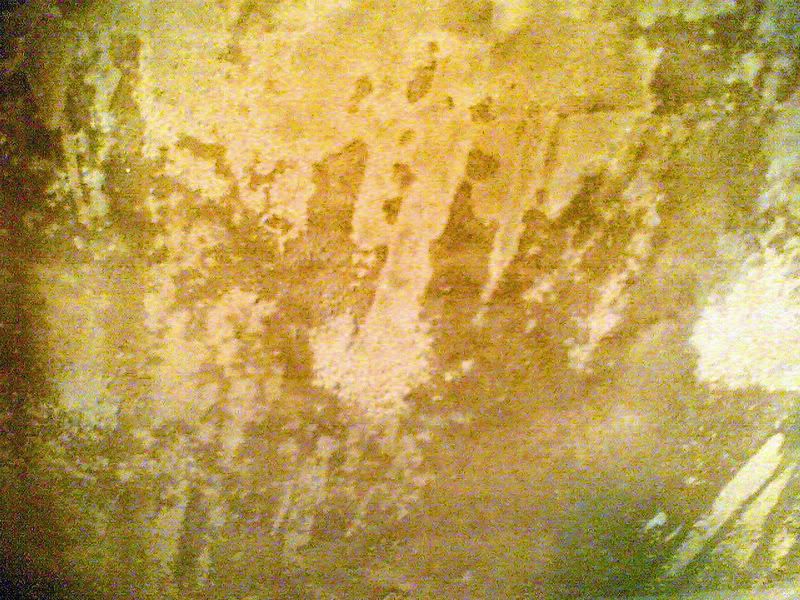Hi  It's been recommended that I ask here about a potential damp problem I have . ( I think he may be a member here I'm sure he will make himself known if he is )
Some background first
We first noticed signed of damp well over a year ago and spent that time on the phone receiving various empty promises from our landlord
Last week after involving the council he finally got his finger out and sent some guy's out to sort it.
They removed the plaster and drilled holes about 1/2 brick apart and about 3-4" from the floor and injected some white stuff into the holes.
After that they applied a thick coat of some grey stuff which was mixed up in a mixer and then the plaster on top of that .
They finished plastering about a week ago and the plaster has not dried properly and has developed some white fluff on the part which isn't dried properly .
Basically Ive been told it looks like the damp is still there ... but as everything involving the landlord is a uphill struggle I would prefer to be sure before I start hassling him again.
I'm not a builder so I wont know the names / terms for the stuff they used , I have described it as best I can but feel free to ask me more questions and I will do my best to answer.
Here are the picture's which make it look much worse then it is. ( I'm not a photographer either  : )
)


I would greatly appreciate any opinions you have as I'm pretty fed up of the whole fiasco now. Â
Many Thanks
Steve.
Some background first
We first noticed signed of damp well over a year ago and spent that time on the phone receiving various empty promises from our landlord
Last week after involving the council he finally got his finger out and sent some guy's out to sort it.
They removed the plaster and drilled holes about 1/2 brick apart and about 3-4" from the floor and injected some white stuff into the holes.
After that they applied a thick coat of some grey stuff which was mixed up in a mixer and then the plaster on top of that .
They finished plastering about a week ago and the plaster has not dried properly and has developed some white fluff on the part which isn't dried properly .
Basically Ive been told it looks like the damp is still there ... but as everything involving the landlord is a uphill struggle I would prefer to be sure before I start hassling him again.
I'm not a builder so I wont know the names / terms for the stuff they used , I have described it as best I can but feel free to ask me more questions and I will do my best to answer.
Here are the picture's which make it look much worse then it is. ( I'm not a photographer either  :


I would greatly appreciate any opinions you have as I'm pretty fed up of the whole fiasco now. Â
Many Thanks
Steve.

